
| WWT Shows | CLICK TO: Join and Support Internet Horology Club 185™ | IHC185™ Forums |

|
• Check Out Our... • • TWO Book Offer! • |
Welcome Aboard IHC185™  Internet Horology Club 185
Internet Horology Club 185  IHC185™ Discussion Site Main Page
IHC185™ Discussion Site Main Page  Horological Discussions, Questions and Answers
Horological Discussions, Questions and Answers  Military Timepiece Discussions - EXCLUSIVE!
Military Timepiece Discussions - EXCLUSIVE!  Curtis NC-4 8 DAY U.S. NAVY CLOCK
Curtis NC-4 8 DAY U.S. NAVY CLOCK
 Internet Horology Club 185
Internet Horology Club 185  IHC185™ Discussion Site Main Page
IHC185™ Discussion Site Main Page  Horological Discussions, Questions and Answers
Horological Discussions, Questions and Answers  Military Timepiece Discussions - EXCLUSIVE!
Military Timepiece Discussions - EXCLUSIVE!  Curtis NC-4 8 DAY U.S. NAVY CLOCK
Curtis NC-4 8 DAY U.S. NAVY CLOCKGo  | New Topic  | Find-Or-Search  | Notify  | Tools  | Reply to Post  |  |
| IHC Life Member Sergeant at Arms |
Aloha My Ohana I recently bought a U.S.Navy 8 Day clock that was said to have been taken from Curtis NC-4 Sea Plane in Feb 1924 The U.S. Navy achieved the first transatlantic flight eight years before Charles Lindbergh became world famous for crossing the Atlantic nonstop and alone. Three Curtis flying boats, each with a crew of six, were involved: NC-1, NC-3, and NC-4. The Navy wanted to prove the capability of the airplane as a transoceanic weapon and technology. The five-leg flight began on May 8, 1919, at the naval air station at Rockaway Beach, New York. It followed a route to Nova Scotia; Newfoundland; the Azores in the middle of the Atlantic; Lisbon, Portugal; and Portsmouth, England. Only NC-4, commanded by Albert C. Read, flew the whole way. The entire trip took 24 days. Conceived during the First World War, the NC class of flying boats, popularly known as "Nancy Boats," was intended to meet a U.S. Navy requirement for extended range aircraft for anti-submarine patrol. An important design consideration of the NC class held that these flying boats be capable of flying under their own power from the continental United States to the European war zone because shipping space was in short supply during this period in 1917. The German U-boat offensive at the time was sinking close to one million tons of Allied shipping every month. The Curtis NC-4 was put on public display in Central Park in New York City and in several other locations, including Philadelphia and Washington, D.C. The hull of the NC-4 was exhibited at the Smithsonian Institution in 1920 and it was transferred to the Smithsonian in 1927. The remaining components were retained in Navy storage until they were obtained by the Smithsonian in 1961. The Smithsonian decided to fully restore the NC-4 for the 50th anniversary of the first transatlantic crossing. With the assistance of three Navy technicians, the restoration of the NC-4 was completed and the aircraft was displayed on the national Mall for the 50th anniversary celebration on May 8, 1969. After the brief exhibition, the NC-4 was disassembled and placed in storage until it was loaned to the Naval Aviation Museum in Pensacola, Florida, in 1974.where it remains Today http://www.navalaviationmuseum...rtualtour/?s=pano699 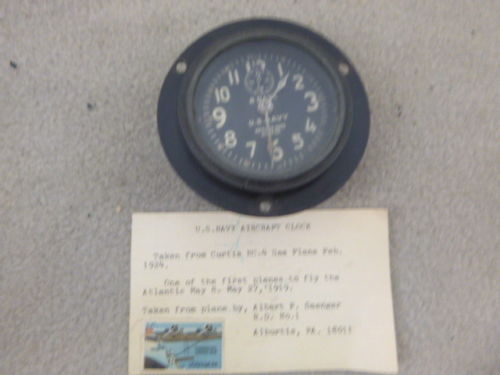 | ||
|
| IHC Life Member Sergeant at Arms |
PHOTO II 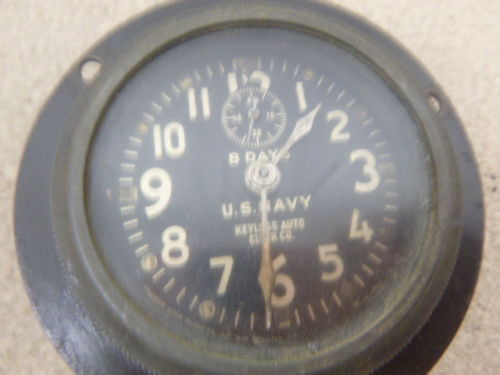 | |||
|
| IHC Life Member Sergeant at Arms |
PHOTO III 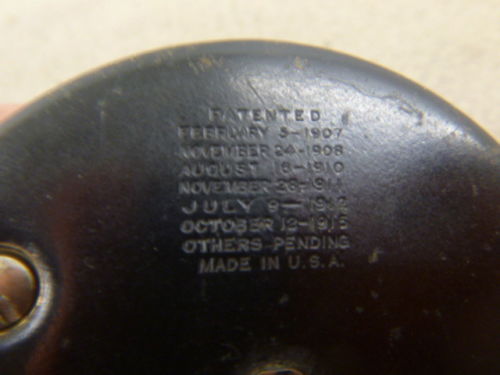 | |||
|
| IHC Life Member Sergeant at Arms |
PHOTO I  | |||
|
It is a nice clock, but it makes me think of some possible questions that might be worth researching a bit. For example what is the provenance beyond the modern typed 3x5 file card with a postage stamp from 1985 on it that this particular clock was this actual clock that was in the NC-4 as opposed to one similar to it? Also, as you pointed out the NC-4 and her parts have a chain of custody between Navy ownership and Smithsonian ownership so there would be no opportunity for private ownership of any of the parts and result in something being in private hands. I see a name on the typed information card with this that it was taken by a Mr. Albert P. Saenger in 1924 when it was in the custody of the US Navy. If this is so then it may be that the Navy, and now the Smithsonian have actual ownership of it still and that Mr. Saenger did not have the right to take it? Also, this particular clock seems to be a bit out of date for a military aircraft built in 1919. By this time the standard Air Service and Navy aircraft had been outfitted for two or three years with Waltham and Chelsea aircraft clocks which were of much higher quality and specifically made and ruggedly built to be used in aircraft rather than the more fragile repurposed automobile clocks such as the Keyless made ones. It is possible that they used an old surplus clock like this, but I am not sure how likely it was given that Curtiss was already using Walthams by 1916. The out of date-ness of this Keyless is indicated by the last patent number on this clock of 1915. It would not make much sense to me use such an instrument on a 1919 aircraft that they were going to fly across the Atlantic and would want reliability, accuracy and ruggedness to ensure it did not fail during the flight. Finally, in the cool image that you kindly linked of the cockpit of the NC-4, I think I am seeing a clock near the bottom of the central panel. It has a slightly different mounting than the one on this example in the placement of the screw holes around the outside. | ||||
|
| IHC Life Member Sergeant at Arms |
Aloha Kimo My thinking as well I have messaged the Navy and informed them that if this is the NC-4 clock I would send it to them. If not this fairy tail will end here. Mahalo my Brother | |||
|
| IHC Life Member Sergeant at Arms |
Aloha our Ohana Update Roger copy Dina I will be happy to send it ; Naval Aviation Museum Foundation, Inc. C/O Dina G. Linn 1750 Radford Blvd., Suite B Naval Air Station Pensacola, FL 32508 Mahalo nui loa Scott P.s. I just realized that Today is the 99th Anniversary of that five-leg flight that began on May 8, 1919 On Tuesday, May 8, 2018, 2:04:09 PM PDT, Linn, Dina G CIV NATLMUSEUMNAVAV <dina.linn@navy.mil> wrote: Sir, Thank you for your interest in the National Naval Aviation Museum and for your generous donation offer. As a coincidence, we were made aware of the recent Ebay listing of the NC-4 clock and were simultaneously performing research to see if it was in fact an original piece. I was overjoyed to receive your email! If you like, you may mail the clock (with accompanying note card) to the museum using the information in my signature line below. We can facilitate a Custody Receipt form which serves as documentation while the piece is in museum custody, but does not gift it to the museum until a Deed of Gift is signed. This would allow us time to inspect and finish researching the piece; if proved authentic, we could then generate the deed for your signature. Our research has shown that following her historic flight, the NC-4 traveled to numerous American cities and was subsequently recovered at least two times, after being placed on display in the National Mall. It is very possible that personnel accompanying the aircraft (or simply visitors to DC) took pieces of her as souvenirs. Fabric from the aircraft is frequently sold, originally generated as a money-making endeavor by the Smithsonian years ago, but buyers are unable to verify if the fabric is from the original covering or subsequent modifications. Please let me know if you have any other questions regarding donations to the museum and I will be happy to assist. Sincerely, Dina -----Original Message----- From: Scott A Whittey [mailto:scottwhittey@yahoo.com] Sent: Monday, May 7, 2018 7:15 AM To: Nick Thrasher <nthrasher@navalaviationmuseum.org>; Marie Norris <mnorris@navalaviationmuseum.org> Subject: Foundation - Information Request Form Submission From: Scott A Whittey <scottwhittey@yahoo.com> Subject: [your-subject] Message Body: Aloha I recently bought a U.S.Navy 8 Day clock that was said to have been taken from Curtis NC-4 Sea Plane in Feb 1924 could you please see if this is in fact the clock belonging to NC- 4 if this is the case I will send it so that it can be reinstalled in the aircraft Mahalo Scott scott.whittey@us.af.mil -- This e-mail was sent from a contact form on Naval Aviation Museum Foundation | |||
|
| Life Achievement Military Expert |
I did a little research regarding the U.S. Navy marked Keyless Auto clocks a few years ago. The company had a large advertisement in the July 1918 issue of MOTOR BOATING magazine bragging about their contract to supply clocks for use in U.S.Navy aircraft. Several other issues of MOTOR BOATING had these ads. The last ad I found was a small one in the February 1919 issue. The Keyless Auto clock is not on the same level of precision as the Waltham XA or the Chelsea. However, after working on a couple of them I can say the Keyless was definitely rugged enough for use in aircraft. Without doing the research it's pointless to speculate as to what clock might have been used in a given aircraft in 1924. But I would not be surprised if a Keyless was bolted to the instrument panel. The USN did not have a big budget after WWI and if a mechanic needed a clock he would have used whatever was in inventory. | |||
|
| IHC Life Member Sergeant at Arms |
Source; American Institute of Aeronautics and Astronautics 1 Developing the Navy’s NC Flying Boats: Transforming Aeronautical Engineering for the First Transatlantic Flight Eric J. Silberg and David J. Haas Naval Surface Warfare Center, Carderock Division, West Bethesda, Maryland, 20817 Page 13 F. Construction Significant advances in construction were necessary in order to build the unprecedented Nancy flying boats. The aircraft was simply too large and complex to be built by a single manufacturer, especially given that the original intent was to produce the aircraft in quantity for combat use. It was decided to break the construction up into components and sub-contract the build to manufacturers who could fabricate the specialized pieces. Curtiss would be responsible for the overall construction and integration of all the parts, and the Navy, with Westervelt as its representative, would retain overall authority over the build. This method of construction, while standard today, and common for ships of the day was new for aircraft and required significant coordination and precision in design in order for all the pieces to fit together and work as required. The following major components of the NC flying boats were built by the different companies Shown in Table 1. Table 1: Manufacturers of NC Flying Boat Components Hulls: Curtiss Engineering Corporation, Garden City, NY (NC-1) Lawley & Sons Boat Co, Boston, MA (NC-2, NC-3) Herreschoff Co., Briston, RI (NC-4) Tail Booms: Pigeon -Fraser Hollow Spar Co., Boston, MA Gas Tanks: Aluminum Co. of America, Pittsburg, PA Wings, Control Surfaces, and Struts: Locke Body Co., New York City, NY ,Unger Bros., Newark, NJ Metal Fittings: Brewster Body Co., New York City, NY, Beaver Machine Co., Newark, NJ Wing Tip Floats: Albany Boat Co., Albany, NY Liberty Engines: Packard Motor Company, Detroit, MI 24“NC Boats Were Built to Fight Submarines”. Aircraft Journal , May 24, 1919. Archive of the National Air and Space Museum, Washington, D.C., NC-4 Collection. These companies had significant expertise, but in areas not necessarily related to aircraft manufacturing. For example, Unger Brothers was a maker of fine silverware and jewelry, Locke Body Company was a high -end automobile coach -builder, and Pigeon Fraser Hollow Spar Company built masts and spars for racing yachts.11 Westervelt, G. C., “Design and Construction of NC Flying Boats”. United States Naval Institute Proceedings, Vol 45, No 199, September 1919, pp. 1529 -1581. There was concern early in the process that the components would not fit or be serviceable, but those fears were quickly allayed during the first build of the NC-1. These companies were able to quickly adapt their specialties to the unique requirements of aircraft manufacturing and the assemblies all fit together very well Page 15 H. Equipped for Success The vehicle itself was not the only development in aviation technology. The equipment installed and used on the transatlantic flight was cutting edge, and some was being tested for the first time. The Nancies were equipped with a full assortment of avionics. The cockpit had airspeed gauges, altimeters, compasses, pitch attitude and angle of bank indicators, and engine performance and status gauges (Fig.23) . Up front in the navigator’s compartment, the aircraft commander had a specially designed sextant that could be used without a horizon for sighting, a drift indicator compass, and a table under the deck for all the necessary maps and charts. The real innovations were in the radio compartment, though. The radio operator had access to 75 mile short range and 300 mile long range radio sets , and there was an intercom system allowing the crew to speak with one another and even allowed the commander to speak over the radio. There were two sets of antennae for use depending on whether the boat was on the water or in the air; one fixed between the wing struts and one trailing unit that could be reeled in before landing (Fig. 24). These radios allowed the Nancies to communicate with each other and with the ships strung out across the Atlantic .Radio was not used for communication alone; for the first time it would be used over a long distance for navigation. The Nancies had radio compasses, or radio direction finders, that the radio operator would tune to a transmitter to determine the aircraft’s relative bearing to the location of the transmitter . Ships strung out across the Atlantic were equipped with these transmitters to provide a beacon for the aircraft to follow. The radio compass worked well while installed on the NC-2 with its twin -tandem engine configuration, providing good bearings out to sixty miles. Unfortunately, there was insufficient time to fully test the installation with the final engine configuration and the interference created by the centerline engines significantly reducing the radio compass’ effective range. 26 Correspondence from CDR J. Towers, Commander NC Seaplane Division One, to Chief of Naval Operations, November 1919. Archive of the National Air and Space Museum, Washington, D.C., NC-4 Collection. 27 Smith, R. K., First Across! The U.S Navy’s Transatlantic Flight of 1919 . Naval Institute Press, Annapolis, MD,1973. The compasses and gauges were self -illuminating for visibility at night, however these needed to be “recharged” regularly by flashlight. Powering all this equipment were batteries and a wind-powered generator located in the slipstream of the centerline propellers. The result was a better equipped aircraft than had ever before flown, and it needed to be, in order to find its way across the ocean. https://screenshots.firefox.co.../www.navsea.navy.mil https://screenshots.firefox.co...V20/books.google.com U. S. NAVAL INSTITUTE, ANNAPOLIS, MD. DESIGN AND CONSTRUCTION OF THE NC FLYING BOATS By Commander G. C. Westervelt, C. C, U. S. Navy In June, 1917, two months after the entry of the United States into the World War, no definite air policy or program had been adopted by this country. This condition was due to the lack of any conclusive information regarding the work of the Allied Governments along these lines, and to varied and contradictory recommendations which had been received from the War De- partments and the Admiralties of Great Britain and France as to the types of planes which should be adopted by this country. To remedy this condition an informal joint Army and Navy Board was appointed to proceed to Europe and to make a study of air matters among the principal governments engaged in the war against Germany, and to recommend the steps to be taken by our government in building up its own air services and in carrying out a definite air policy. The personnel of this committee was Major R. C. Boiling, Captain V. C. Clark, Captain E. S. Gofrell, Captain Howard Marmon and Captain Hughes representing the army, and Lieu- tenant W. G. Child and the writer representing the navy. In accordance with instructions to the committee, they proceeded to Europe, arriving in London the latter part of June. At this time, the naval activities of the U. S. Government were directed mainly against the submarines. The center of naval activities was the American Embassy in London, and by this time the naval officers had become keenly aware of the grave menace of the German submarines. At the embassy all discussions centered around this subject, and it was evident that fuller methods of combating the submarine must be provided and provided very quickly. Accordingly, we began a particular and detailed study of the types of aircraft for use against the submarine menace. This study was carried on in England, in France, and in Italy, and, as a result of this study, it was concluded that the quickest way for the navy to obtain results in the air would be with kite balloons, for observation purposes, anchored to a destroyer or some other type of patrol vessel, and with seaplanes of the flying boat type, as differentiated from the hydroaeroplane, for patrol purposes and for the bombing of submarines. 1530 Design and Construction of " NC " Flying Boats To facilitate construction, various parts were made under sub- contracts from the Curtiss Company. The principal ones which , may be noted are as follows. Wing panels, control surfaces, and wing struts, were built by Locke & Company of New York City, expert manufacturers of high-class motor car bodies. Metal parts were made by Unger Brothers, Newark, N. J., manufacturers of silverware, jewelry and all kinds of metal articles ordinarily handled by jewelers. Later, to expedite the production of metal parts, some of these were manufactured by the Beaver Machine Works of Newark, and some by Brewster and Company of New York City. Wing tip floats were built by the Albany Boat Company, builders of high-class steam launches and motor boats. These, later were replaced by larger floats built by the Naval Air- craft factory of Philadelphia. The outriggers supporting the tail were built by the Pigeon-Fraser Hollow Spar Company of Boston, makers of masts and spars for racing yachts. The gasoline tanks were built by the Aluminum Company of America of Pittsburgh. The construction of these tanks was the largest and most difficult job of this nature ever undertaken by any aluminum manufacturer. Two of the hulls to be supplied by the navy were built by Lawley & Sons of Neponset, Mass., and one by the Herreschoff Manufacturing Company of Bristol, R. I. These hulls were built on the basis of cost, plus 10 per cent profit on an estimated cost, with the understanding, if the cost could be reduced below the estimated cost, the contractor would be paid 10 per cent on the estimated cost, and, in addition, 25 per cent of the difference between the actual and the estimated costs. To assist the Curtiss Company in expediting the production of these parts, and to aid in every way in the construction and assembly of the machine, four officers attached to the office of the writer, were detailed to work with Mr. Gilmore of the Curtiss Engineering Corporation, who had been placed in full charge of the construction work on these four machines. Only because of the faithful work of these officers was it possible to complete the first of these flying boats in September, 1918. 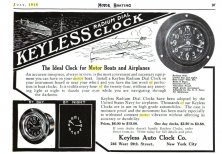 | |||
|
| IHC Member 2030 |
Boom, thank you Scott | |||
|
| IHC Life Member Sergeant at Arms |
Resized photos 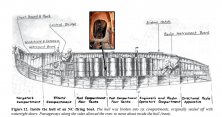 | |||
|
| IHC Life Member Sergeant at Arms |
Aloha Up-Date Linn, Dina G CIV USN (USA) <dina.linn@navy.mil> To:Scott Whittey Tue, Aug 4 at 8:14 AM Good Morning Scott, Always so nice to hear from you! I had conducted extensive research on the clock when we first accepted the piece, but with the absolute craziness of COVID and other projects it was placed on the back burner. I did hit a wall when it came to leads but had really done some digging using just the note that came with the clock. Through some heavy sleuthing, I was able to contact the son of the man whose name features on the note and determined that the clock had been sold at the family’s estate sale following his father’s death. In comparing the note that was placed with the clock, the original owner’s service history, and the trajectory of the NC-4 herself following her flight and subsequent storage, the closest thing I was able to determine was that the gentleman received the clock from someone during the time that NC-4 was in storage at Cheatham Annex (Naval Weapons Station Yorktown, VA). As with the propellers used on NC-4, the clocks and some of the instruments seemed to have been swapped out regularly during the historic transatlantic flight itself and during the victory tour that followed. I’m sure that people familiar with the historic nature of the aircraft probably took souvenirs when the aircraft was stored in Virginia in the 1940s- people even took pieces of her cotton fabric when she was displayed years later on the Mall in Washington, DC! To date, this is the extent of the research available, and is the best educated theory that I have uncovered. My motto is never to guess or to definitively report on the provenance of an item unless we are certain. I have also found that over time, more clues become available that can clarify an educated theory. My knowledge on our NC-4 artifacts is extensive and hopefully one day another puzzle piece will turn up that can give us more of an answer. The clock is from the time period and was of the type that would have been used on the NC-4; the only issue is confirming how the owner actually obtained it and from whom. Depending on the time and place, the clock may never have been on the aircraft during the actual flight itself. I will be sure to update you with any developments- this email chain and all associated information is in my NC-4 file (and filing cabinet of a brain!) so rest assured it has not been forgotten. I am always amazed by the interesting and sometimes obscure places where NC-4 relics turn up- just visited a small aviation museum in South Florida last summer and stumbled upon all sorts of interesting tidbits. Best to you and yours in Hawaii and please don’t hesitate to contact me with any other questions. Sincerely, Dina Dina G. Linn Museum Curator National Naval Aviation Museum 1750 Radford Blvd., Ste. C Pensacola, FL 32508 (850) 452-8227 dina.linn@navy.mil From: Scott Whittey <scottwhittey@yahoo.com> Sent: Monday, August 3, 2020 4:25 PM To: Linn, Dina G CIV USN (USA) <dina.linn@navy.mil>; nthrasher@navalaviationmuseum.org; mnorris@navalaviationmuseum.org Subject: [Non-DoD Source] NC-4 Clock Aloha Dina Have you found out anything on the clock? Mahalo Scott | |||
|
| Powered by Social Strata |
| Your request is being processed... |
|
©2002-2025 Internet Horology Club 185™ - Lindell V. Riddle President - All Rights Reserved Worldwide

